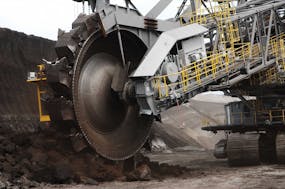On 21 May 2017, the Swiss population voted in favor of the first set of measures of the Federal Energy Act, also known as the “Energy Strategy 2050”. The Fukushima accident, which took place six years ago, was the emotional trigger which led to the reform. The objective is to review the current energy legislation in order to stir the country towards reduced energy consumption, increased use of renewable energies and a gradual withdrawal from nuclear energy. But what exactly does this entail for the future and what are the options available to the country ?
Across the globe, the energy market has suffered a series of fundamental changes such as price and production cost adjustments, affecting supply and demand in this given sector. Despite all these factors, Switzerland’s energy supply is still considered as both secure and cost-efficient. The Federal Council introduced the Energy Strategy 2050 at a crucial moment, taking advantage of the circumstances in order to embrace the efforts put in place and contribute towards reducing energy-related impacts on the environment, while maintaining at the same time a high supply standard.
Energy Strategy 2050
The approved “Energy Strategy 2050” reflects the government’s view on how to further develop Switzerland’s efforts concerning energy efficiency, as well as encouraging the development of different renewable energies such as : hydro-power, sun, wind, geothermal and biomass. The strategy will have to be implemented through laws enacted by the Parliament in the next years.
Additionally to energy efficiency and renewable energies, the “Energy Strategy 2050” emphasizes two more guiding principles, i.e, securing the sourcing of foreign energy and planning the replacement and construction of alternative electricity-producing power plants.
However, the most spectacular and heated topic of discussion during the campaign preceding the vote on “Energy Strategy 2050” was the progressive withdrawal from nuclear energy production. A majority of Swiss citizens accepted to gradually renounce to this energy source, accounting today for approximately one third of the global energy supply in the country. The plan is to shut down the five currently operated nuclear power plants as they reach the end of their considered technically safe operating life. The lost energy production capacities will have to be compensated through other production channels. In order to achieve this ambitious goal, Switzerland has to fundamentally improve and renovate its energy production system.
Energy mix in Switzerland
At present, Switzerland’s energy source is mainly provided by hydro-electric (close to 60% of global supply) as well as nuclear power (around 33% of global supply). Before entering a debate on what Switzerland needs to do in regard to its energy supply sources and how it must achieve it, an interesting exercise is to analyze the advantages and disadvantages of each source of production. Avenir Suisse has worked on this question and has prepared a table summarizing some main points concerning these elements. You may find the table under this link.
In order to proceed to the comparison of various energy sources, a series of criteria were selected. For example, one of the most important criterions chosen was the costs incurred for each kilowatt hour (Kwh) produced. Another was to consider the potential contribution to power supply in the future.
In the scope of the debate regarding the innovative renewable energy sources, such as solar (photovoltaic), wind and biomass, among others, it was also essential to evaluate the contribution of each energy source towards the stabilization of the electric power grid. Considering the existing physical constraints, access to the energy power source must be able to keep up with the demand at all times. Tolerance to any fluctuation is actually very low, since a value below or above the threshold could lead to a breakdown in the electrical grid, which could then be followed by power cuts.
In addition to all this, the function of an energy source for Switzerland must be judged on certain unpredictable factors such as climate. The stronger the dependency on these factors – and hence the less the energy production will be readily available – the weaker the contribution of the energy source towards the stabilization of the grid. The security of the supply may even suffer, if unpredictable power-flows disrupt the network’s stability.
Other evaluation criteria chosen were the dependency of each energy source to foreign purchases, the level of CO2 emissions associated with an energy source, as well as other negative externalities caused by production in Switzerland.
Although the table provides a clear overall assessment, it remains quite limited due to its small format. It can nevertheless prove to be useful when discussing the future of the energy strategy and the objectives of the different political electricity supply sources in Switzerland.
What are the challenges for the future ?
No doubt : the 2017 vote approving the “Energy Strategy 2050” is a milestone for Switzerland’s public policy on energy. Some consider the withdrawal from nuclear energy as a symbolic success – which it is, for its supporters –, as well as a right step towards more energy efficiency and supply-security – which it isn’t –.
The uncertainties regarding Switzerland’s energy policy in the future remain numerous and it won’t be easy to find answers. To begin with, there is no concrete plan to compensate, sooner or later, for the 33% of global energy supply provided by the nuclear sector which is doomed to disappear. The hope that the progressive withdrawal from nuclear power will stimulate the growth and development of “new” renewable sources, such as solar or wind power, seems to be wishful thinking at this stage. Wind power projects in Switzerland become systematically jammed at some point, due to local political oppositions : on principle, the idea of wind power is largely supported, but nobody wants a wind turbine in their neighborhood ; this is known as the “not-in-my-backyard” syndrome). As for photovoltaic innovations and developments, heavy and expensive state-subsidization, despite being lower than in Germany, have sharply distorted competition and created false incentives, leading to costly inefficiencies in production. Currently, no credible scenario, showing a viable way to replace the 33% global supply share of nuclear through wind and/or photovoltaic, has been written. Eventually, this could lead to a non-desired paradox : abandoning nuclear power might fail to stimulate the emergence of renewable energy sources as hoped for, but also dramatically increase the consumption of foreign (mostly German and Polish) “environmental-unfriendly” coal power.
Last but not least, the most important source of energy for Switzerland, hydro-power, accounting for close to 60% of the global supply, is facing serious challenges. After golden decades, Swiss hydro companies face tough financial times : on the one hand, requirements for reinvestments are piling up in the years to come. On the other, international market prices fell drastically, exercising a strong downward pressure on revenues and on the top line. Moreover, some companies have to “absorb” the maturation and market launch of oversized new utilities and capacities, conceived and decided in former and more prosperous times. This leads to huge and unexpected amounts for depreciations. As if the environment was not complex enough, the Swiss hydro-energy sector also faces the public-policy challenge of modernizing the traditional “water tax” system, created more than a century ago (also known as “redevance hydraulique” in French and “Wasserzins”, in German). Water taxes are collected by the regionals entities (Cantons and Communes) where water sources are located. The global amount of this “resource fee” amounts to 550 millions Swiss francs each year. It constitutes a historical and essential source of revenue for alpine cantons, such as Valais/Wallis or Grisons/Graubünden. In a shifting energy market, the anachronism of the historical water tax becomes obvious, as it conceived as a fixed tax, based on average flow rate and utility capacity, without any competitive element or reference to market prices. The much needed-reform regarding these water taxes, will have to either integrate variable elements based on economic market factors for the energy sector, or integrate a competitive dimension by granting the water concessions after a fair open bidding process; or a combination of both.
In short : although Switzerland has adopted a much-commented “Energy Strategy 2050”, many challenges still lie ahead.





